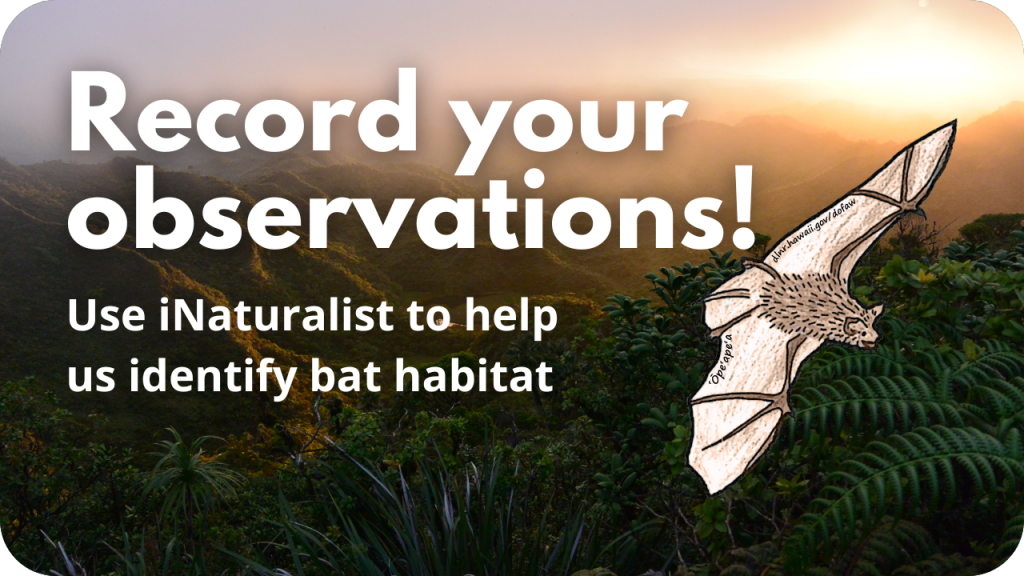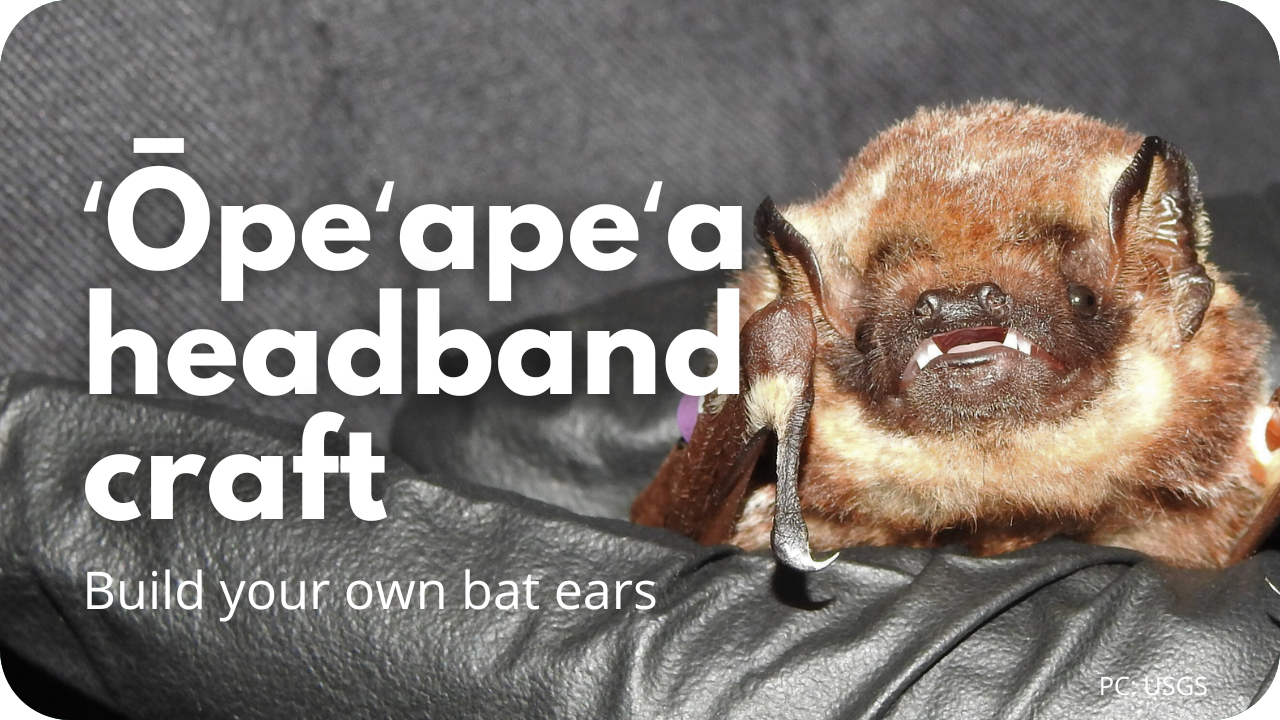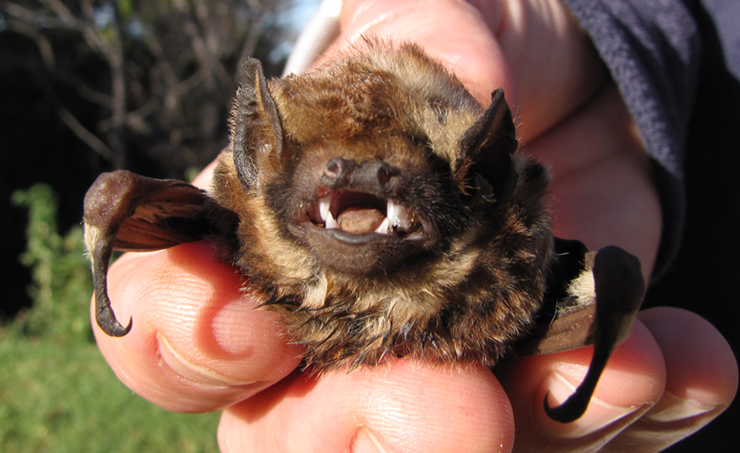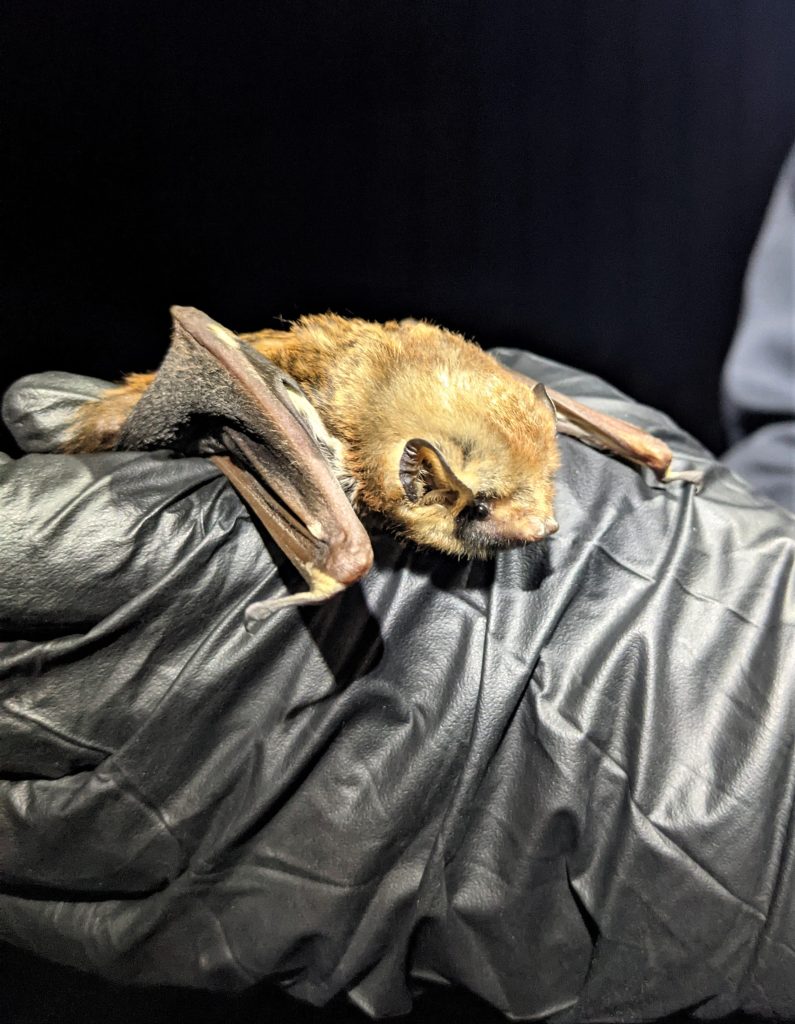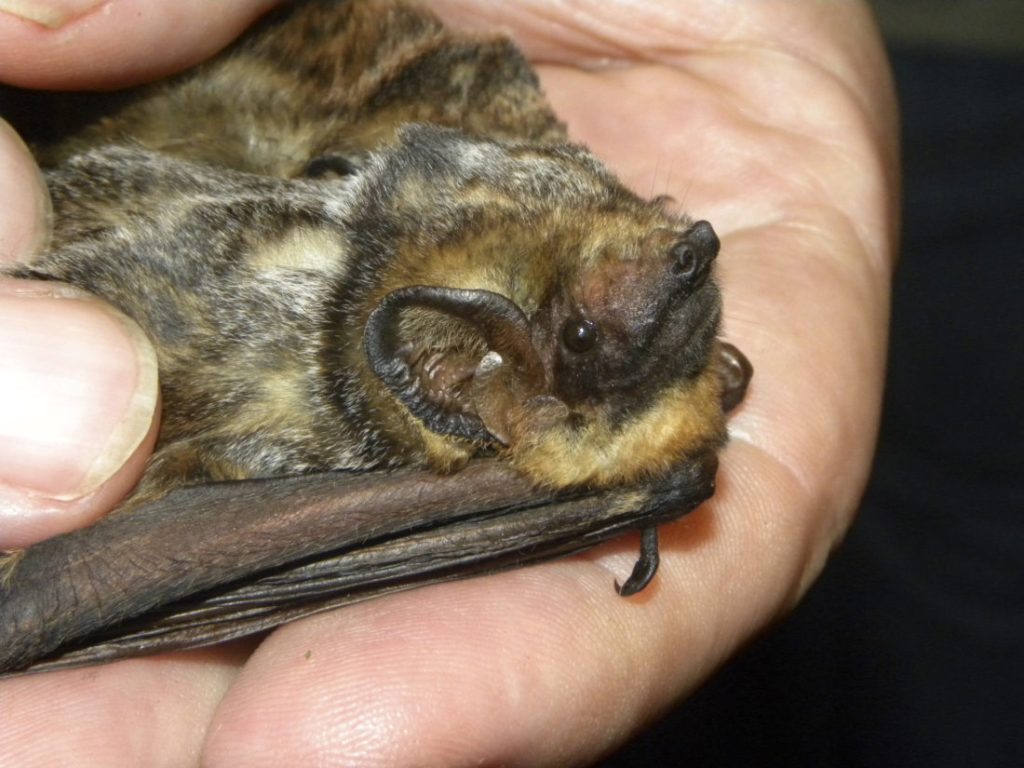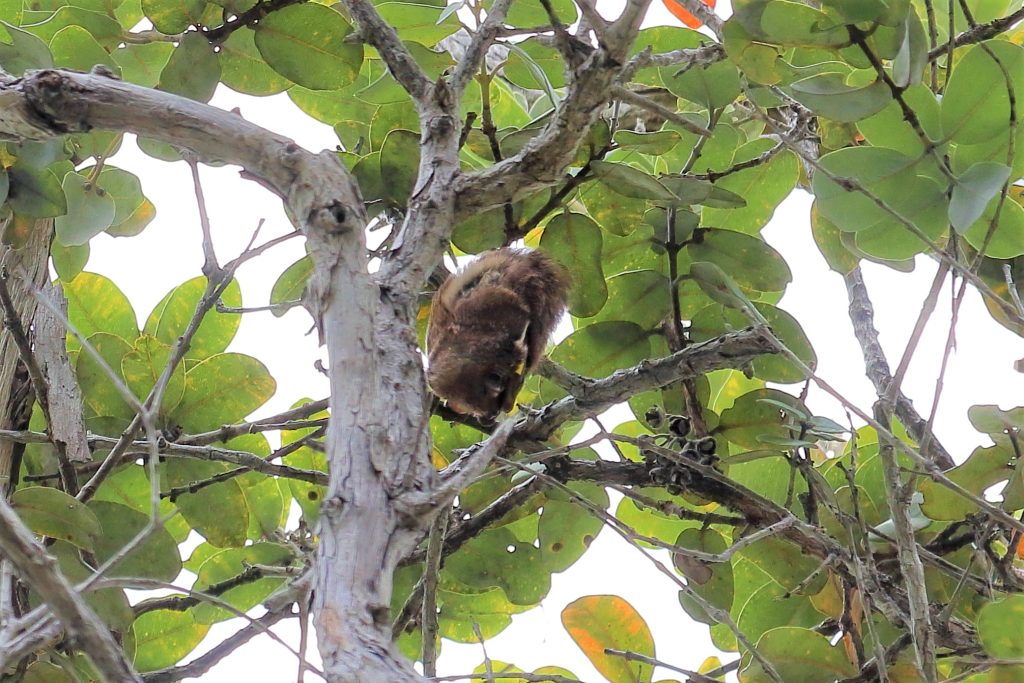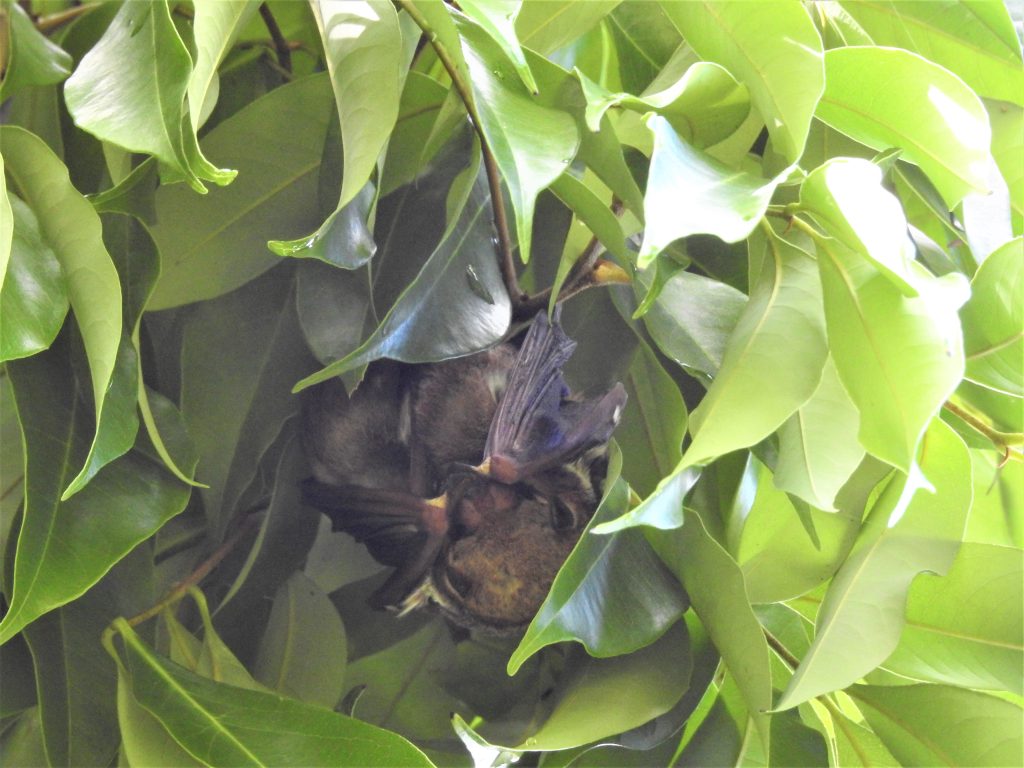ʻŌpeʻapeʻa, the Hawaiian Hoary Bat
Names
- ʻŌlelo Hawaiʻi: Ōpeʻapeʻa
- Common: Hawaiian hoary bat
- Scientific: Lasiurus semotus
Conservation Status
- Federally Listed as Endangered
- State Listed as Endangered
- State Recognized as Indigenous (at the Species Level and Endemic at the Subspecies Level)
- NatureServe Heritage Rank G5/T2 – Species Secure/Subspecies Imperiled
Species Information
The ‘ōpe‘ape‘a, or Hawaiian hoary bat, is Hawai‘i’s only native terrestrial mammal. It was designated as the official state mammal of Hawaiʻi in 2015. There is sub-fossil evidence that at one time at least one other bat species lived in Hawaiʻi. Earlier research suggested that the ancestors of the ʻōpeʻapeʻa arrived in Hawaiʻi from the mainland first around 10,000 years ago and again roughly 600 hundred years ago, forming two different populations (Russell et al. 2015). A more recent study estimates that the first ancestors of ʻōpeʻapeʻa arrived from North America about 1.35 million years ago (Baird et al. 2017).
The Hawaiian name ōpeʻapeʻa refers to the shape of the bat being similar to a half kalo leaf or canoe sail (peʻa). The common name “hoary bat” refers to the white tips found on their brown and gray fur, as “hoary” can mean frosted as if tipped in white ice.
They have a wingspan of roughly one foot, and females are typically larger than males. They usually roost in trees 1 to 9 meters (3-29 feet) off the ground. They roost during the day and leave to forage around sunset. They eat native and non-native night-flying insects like moths, beetles, crickets, mosquitoes, and termites. They use echolocation to find their prey. Mating most likely occurs between September and December, with females usually giving birth to twins around June. Mother bats are likely to stay with their pups until they are six to seven weeks old.
You can learn more about ʻōpeʻapeʻa from this printable flyer for classrooms, which introduces students to an ʻōpeʻapeʻa iNaturalist campaign where students and citizen scientists can record ʻōpeʻapeʻa sightings on the website iNaturalist to help us better understand ʻōpeʻapeʻa distribution.
How to record your sightings on iNaturalist: Go to https://inaturalist.org, create an account, and click “Upload” to record your sighting. If you don’t have a photo to upload, click “+Add” and then choose “Observations without media.” If you use the iNaturalist app instead of the website, you will need to have a photo you can upload. After you upload your observation, it should appear on the species page for ʻōpeʻapeʻa on iNaturalist, helping us understand their habitats.
Distribution
ʻŌpe‘ape‘a live on all the Main Hawaiian Islands, with the exception of Ni‘ihau.
Habitat
‘Ōpe‘ape‘a have been found roosting in ‘ōhi‘a, pu hala, coconut palms, kukui, kiawe, avocado, shower trees, pūkiawe, fern clumps, eucalyptus, cook pine, and Norfolk Island pine stands. Recent work on the island of Hawai‘i found that bat activity varied with season and altitude, and the greatest level of activity occurred at low elevations (below 1,280 meters or 4,200 feet) from April to December (Bonaccorso et al. 2015). Because warm temperatures are strongly associated with reproductive success in this and other bat species, it has been suggested that key breeding habitat is likely to occur at sites where the average July minimum temperature is above 11°C (52°F). If true, key breeding habitat on the island of Hawai‘i would occur below 1,280 meters (4,200 feet) elevation (Bonaccorso et al. 2015).
Threats
- Habitat loss
- Pesticides
- Collisions with structures
- Roost disturbance
- Predation
Plans & Projects
- Learn more about ʻōpeʻapeʻa from this flyer.
- Read ʻŌpeʻapeʻa guidance and research compilation from the Endangered Species Recovery Committee
Photos & Videos
Click slideshow to enlarge
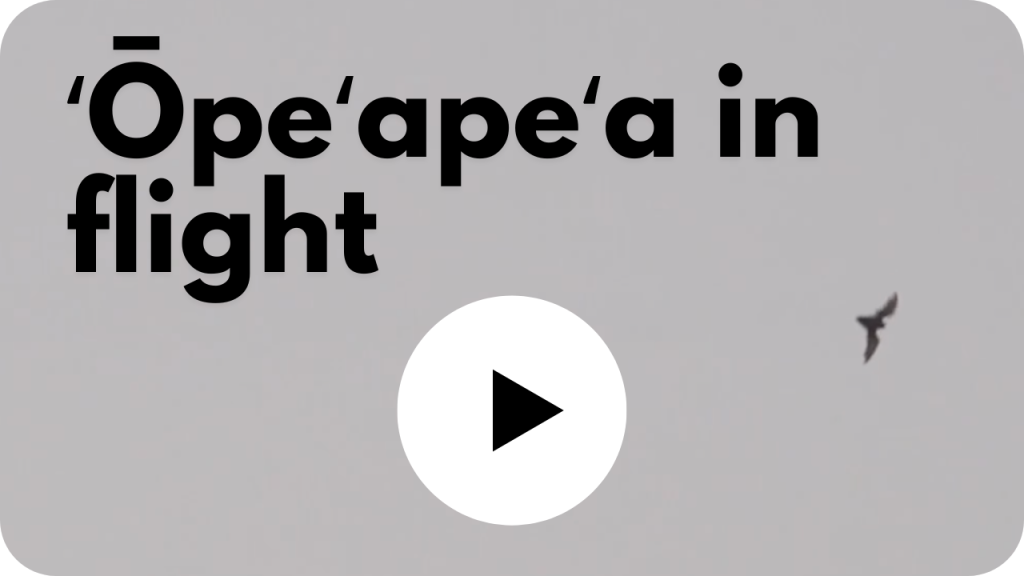
ʻŌpeʻapeʻa in flight over Puʻu Waʻawaʻa (slow motion)
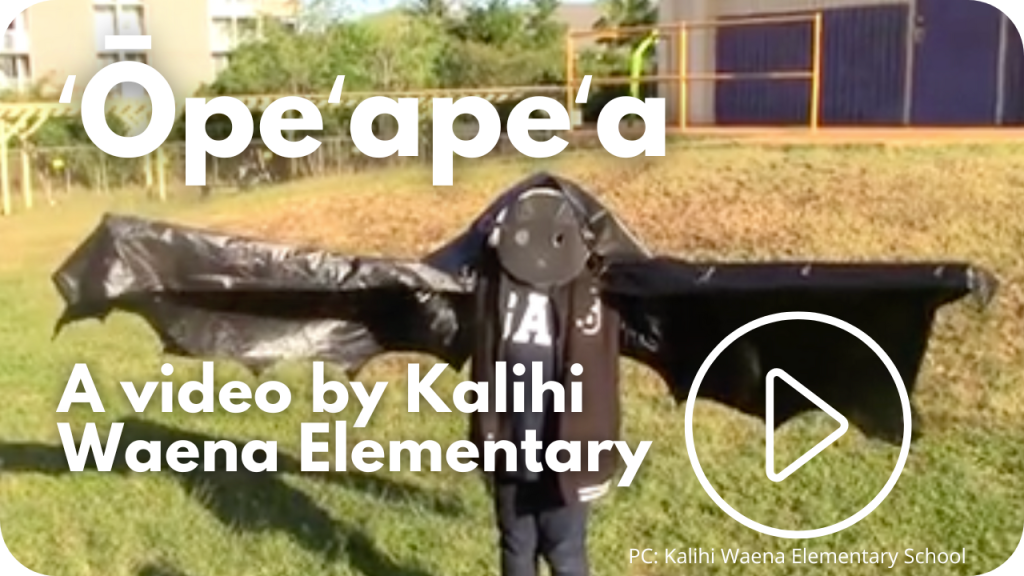
A video about ʻōpeʻapeʻa created by elementary students at Kalihi Waena for our 2023 ʻŌlelo Youth XChange video contest
Additional Resources
For more information and references visit the DLNR State Wildlife Action factsheets. DOFAWʻs species pages and State Wildlife Action Plan fact sheets are provided for general information and are not meant to be a citable, original source of data. If you are a student, researcher, or writer looking for a citable source, please explore the references below or find other original data sources, rather than citing these webpages. The references below were provided by the authors of the State Wildlife Action Plan fact sheets at the time of drafting:
- Baird AB, Braun JK, Engstrom MD, Holbert AC, Huerta MG, Lim BK, Mares MA, Patton JC, Bickham JW. Nuclear and mtDNA phylogenetic analyses clarify the evolutionary history of two species of native Hawaiian bats and the taxonomy of Lasiurini (Mammalia: Chiroptera). PLoS One. 2017 Oct 11;12(10):e0186085. doi: 10.1371/journal.pone.0186085. PMID: 29020097; PMCID: PMC5636129.
- Bonaccorso, FJ, CM Todd, AC Miles, and PM Gorresen. 2015. Foraging range movements of the endangered Hawaiian hoary bat, Lasiurus cinereus semotus (Chiroptera: Vespertilionidae). Journal of Mammalogy 96(1):64-71.
- 2015 Hawaiian Hoary Bat Research Cooperative.
- Hawai’i Natural Heritage Program [Hawai‘i Biodiversity and Mapping Program]. 2004. Natural diversity database. University of Hawai’i, Center for Conservation Research and Training. Honolulu, HI.
- Pinzari, C. A., F. J. Bonaccorso, and K. Montoya-Aiona. 2014 Hawaiian Hoary bat occupancy at kaloko-honokohau National Historical Park Hawaii Cooperative Studies Unit, University of Hawaii at Hilo, Technical Report 51:1-19
- Russell AL, CA Pinzari, MJ Vonhof, KJ Olival, FJ Bonaccorso. 2015. Two Tickets to Paradise: Multiple Dispersal Events in the Founding of Hoary Bat Populations in Hawai’i. PLoS ONE 10(6): e0127912. doi:10.1371/journal.pone.0127912
- U.S. Fish and Wildlife Service. 1998. Recovery plan for the Hawaiian hoary bat. Portland, (OR): U.S. Fish and Wildlife Service. 50 pp


